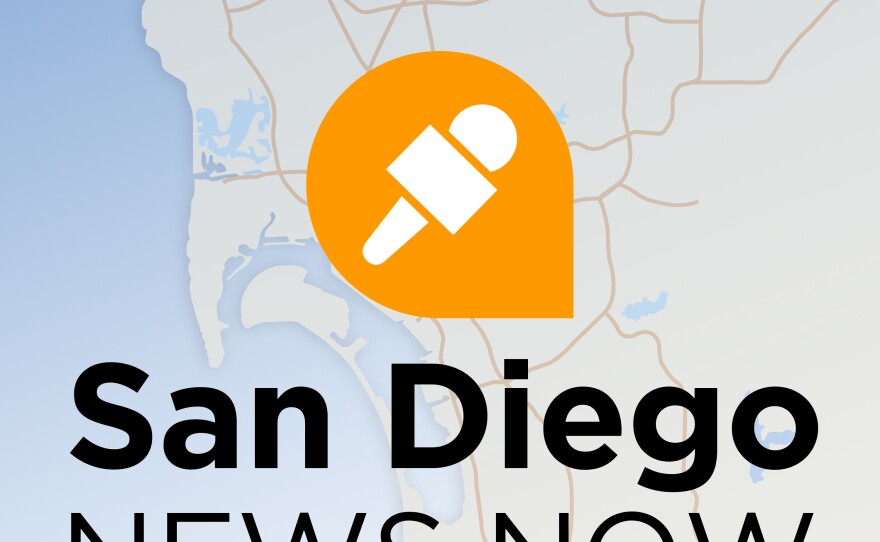California avoided rolling outages during extreme heat, as operators of the state’s electricity grid continued to warn that unprecedented demand on energy supplies could force them to periodically cut power to some customers.
The California Independent System Operator on Wednesday thanked residents and businesses for heeding another “flex alert,” a request to reduce electricity consumption during peak evening hours.
“With your help, we made it through another day without rotating #poweroutages,” Cal-ISO said on Twitter. Another flex alert was issued for Thursday from 3 p.m. to 10 p.m. as temperatures were expected to spike again.
Scott Anders, director of the Energy Policy Initiatives Center at University of San Diego, said the length of these consecutive flex alerts is historic.
“We can kind of trade power between states that are to the east of us or to the North of us and that helps to kind of iron out some of the supply issues we’re having,” Anders said. “But when the whole of the Western United States is under one of these heat domes, there's not much extra power to be traded around because everybody is just as hot as we are.
Targeted blackouts were avoided a day after miscommunication led utilities to mistakenly cut power to customers in several California cities.
The confusion occurred Tuesday afternoon between a dispatcher at the Northern California Power Agency, which owns and operates power generating facilities for 16 members including a dozen cities, and the California Independent System Operator as the grid it manages was perilously close to running out of energy amid record-breaking temperatures.
“That is certainly concerning to me,” Elliot Mainzer, president and CEO of Cal-ISO, said Wednesday. “There was a lot happening on the grid for everybody last night. And so we’ll double down on the communication to make sure that doesn’t happen again.”
San Diego Gas & Electric COO Kevin Geraghty said the utility is seeing some relief in demand due to the incoming storm system.
“We know the cloud cover has actually reduced our demand here in San Diego county just a little bit, he said. “Across the state it's still very high. This is a statewide supply issue so we’re still monitoring all of that... But we’re likely to see relief locally on the demand on the local grid tomorrow based on the timing of the storm.”
That storm is the outer edge of Hurricane Kay, which is climbing up the coast of Baja California. Geraghty said it will bring high winds that can do damage to power lines.
“The best way to help avoid outages during this storm event, the high winds, secure anything that’s loose,” he said. “The number one cause of really very large outages could be debris: things that people have in their pool, because they've all been enjoying their pools during the hot weather like this, secure all that, get that inside.”
With record demand on power supplies across the West, California snapped its record energy use around 5 p.m. Tuesday with 52,061 megawatts, far above the previous high of 50,270 megawatts set July 24, 2006.
As residents and businesses cranked air-conditioning to escape withering heat across the West and solar power supplies began to wane, Cal-ISO issued a stage 3 energy emergency alert to prepare utilities to initiate outages if demand didn’t decrease. The state’s legal marijuana regulatory agency also urged businesses to turn off lights and reduce power or use backup generators.
So far, California has narrowly avoided rolling outages during the extreme heat. But help in the form of cooler weather is on the way for the state and Anders said that should end the Flex Alerts.
“You can see very clearly a drop off … on Saturday when temperatures will be lower across the state, the heat wave will lift and so that’s going to create a needed wave of relief on the grid,” Anders said.
The Northern California Power Agency said its dispatcher misinterpreted Cal-ISO’s order to prepare to cut power and immediately undertook the process to cut 46 megawatts — enough to serve about 35,000 customers — in the cities of Alameda, Lodi, Santa Clara, Palo Alto, Healdsburg, and Ukiah.
It wasn’t clear how many customers lost power, though the agency said no outage lasted more than an hour.
“Once the outages had been initiated, our dispatcher contacted (Cal-ISO) to inform them that the curtailment action had been undertaken, and was then notified there had been a misunderstanding of the initial order,” NCPA said.
With the state on the brink of outages, Gov. Gavin Newsom for the first time triggered a wireless emergency alert system at 5:45 p.m. Tuesday that sent messages to 27 million cellphones urging them to turn off or reduce non-essential power.
Within moments, there was a reduction of more than 2,000 megawatts, bringing the state “back from the edge,” Mainzer said.
“It took a very loud signal,” Mainzer said. “I think they now recognize that we’re not messing around. This is a real issue. And we need real response.”
Newsom, speaking Wednesday in Beverly Hills, said he had debated pushing that button for the past four to five days. He ultimately decided to test it and concluded it was a game- changer, though he’s reluctant to use it too often because he fears weakening its effectiveness. The emergency alert was not repeated Wednesday.
Western states are struggling through one of the hottest and longest September heat waves on record. Temperatures began soaring last week, and the National Weather Service warned that dangerous heat could continue through Friday, despite some slight moderation.
Nearly 54 million people were under heat warnings and advisories across the West as temperature records were shattered in many areas.
California’s state capital of Sacramento hit an all-time high Tuesday of 116 degrees (46.7 C), breaking a 97-year-old record. Salt Lake City tied its all-time high temperature Wednesday at 107 degrees (41.6 C). The heat wave was expected to last until Saturday.
Reno, which sits just across the Nevada line along the Sierra’s eastern front at an elevation of 4,500 feet (1,372 meters), topped the century mark for the ninth day in a row on Wednesday with its seventh consecutive daily record-high — reaching 104 degrees (40 C) after recording its hottest September day ever on Tuesday at 106 degrees (41.1 C), according to weather service records dating to 1893.
Scientists say climate change has made the West warmer and drier over the last three decades and will continue to make weather more extreme and wildfires more frequent and destructive. In the last five years, California has experienced the largest and most destructive fires in state history.
On the Northern Plains, the unusually late heat wave peaked Wednesday following a prolonged string of scorching days.
Along a main thoroughfare in downtown Billings, where the temperature set a daily record at 102 degrees (39 C), Gale Spotted Bear, native of the Blackfeet Reservation, sought shelter from the punishing heat in the shade of a vacant building.
“This year has been hotter than hell,” said Spotted Bear, adding that homeless people can be hit the hardest if they have nowhere to go. “It’s hard out here.”
-
As temperatures linger in San Diego around 90 degrees or higher for another day, being homeless is even more dangerous.
-
Details on why an El Cajon nursing home remains open after a long record of poor care and abuse. In other news, a local doctor’s monkeypox advice is going viral. Plus, how schools without AC units are dealing with the heat wave.






